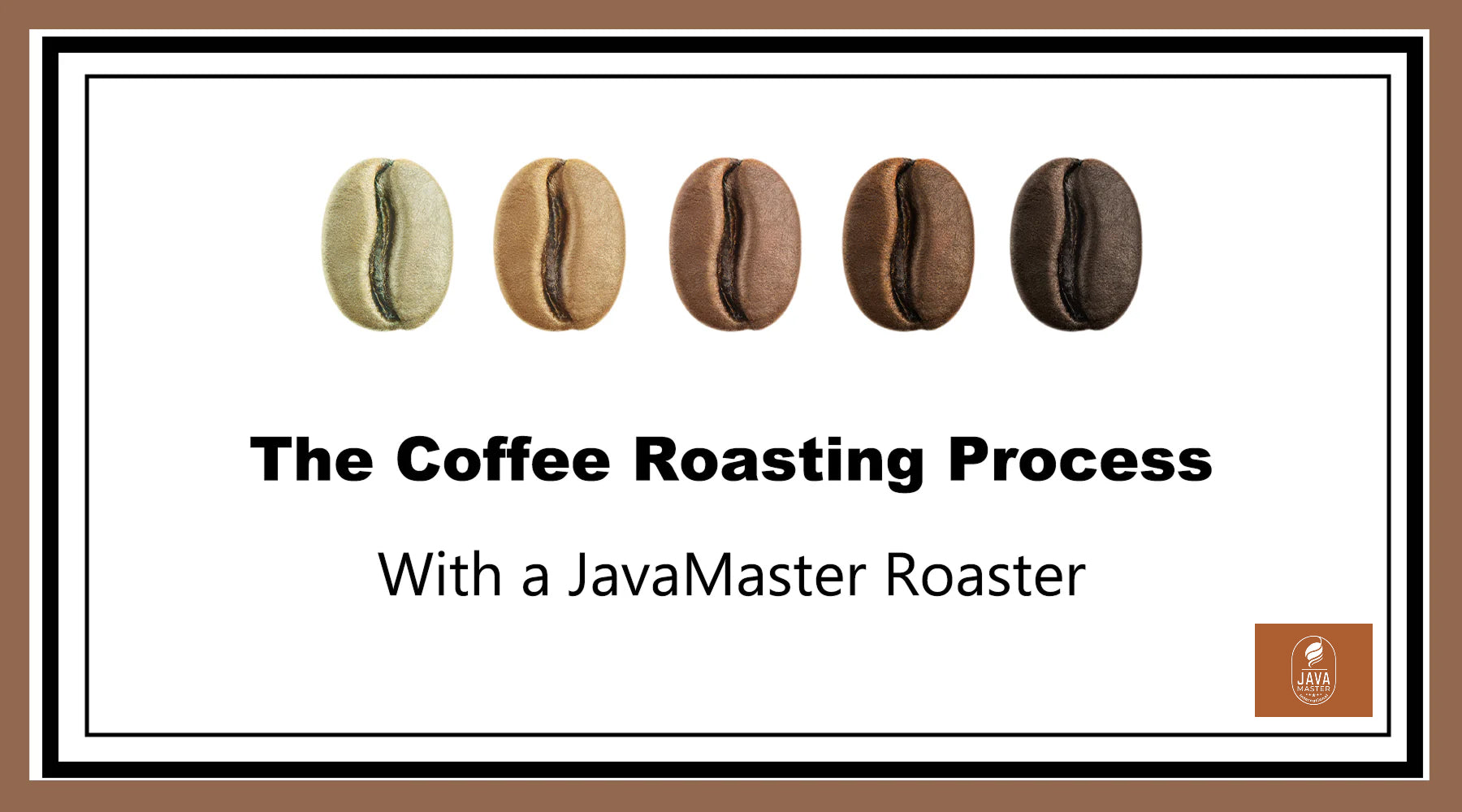Simply put, coffee roasting is adding heat to green coffee beans to produce chemical and physical changes. However, roasting coffee is understood as both an art and a science. It is a means of properly developing the unique characteristics of a natural product and knowing precisely when the flavor has reached its peak of perfection. Each coffee bean has a different size, shape, color, density, moisture content, etc. Thus, each coffee requires a unique roast profile related to time and temperature to unlock the full potential of a bean’s flavor.


The First Phase: Heated Air Supplied
First, green coffee beans (at a specified weight) are loaded into the Java Master roaster. Heated air is slowly applied to the green beans. The process utilized is like a fountain effect and is known as air or “fluid bed” roasting. Heated air levitates the coffee beans as if on a “bed” of air. The hot air envelopes the coffee bean in a uniform “fluid” mass of heat. This process utilizes convection or transference heating. It is highly uniform, efficient, and among the most consistent roasting processes. The air temperature we select ranges between 500°F -560°F depending upon the type and weight of the coffee being roasted.
The Second Phase: The Coffee Beans Change Color
Green coffee beans contain a significant amount of moisture; therefore, you will notice steam released during the early stages of roasting. Additionally, as the moisture escapes the roasting coffee, the bean’s green color will start to turn yellow, slowly becoming a cinnamon brown. Also, during this phase, you will notice a light brown parchment-like material float up and out of the Java Master roasting chamber. This material is called “chaff.” It is a delicate covering on the green coffee bean that peels off during roasting. We collect the chaff in a specially designed collector can on the Java Master roaster.
The Third Phase: The First Crack
When the temperature reaches a critical point, the coffee bean will swell and increase 2x in size. Soon after, a loud cracking noise will be heard as the remaining moisture bursts out of the coffee beans. At this point, the sugars in the coffee have begun to caramelize, and the coffee is considered officially “roasted.” However, the beans are at the lowest roast level at the time of the first crack.
The Fourth Phase: Rapid Color Change
After the first crack, the coffee beans caramelize and release oils relatively quickly. During this phase, the coffee develops quite rapidly. This phase requires extreme care to achieve differing and precise roast styles.
The Fifth Phase (if applicable): The Second Crack
Most roast masters will stop roasting before the second crack, but for some varietals passing the second crack is desirable. The second crack is usually more challenging to identify than the first. The coffee is typically quite dark in roast style by this point. If the coffee is roasted much beyond the second crack, all the sugars will have caramelized, yielding a very harsh, bitter—almost burnt cup.
The Final Phase: Stopping the Roast
The final step is stopping the roast, and with the Java Master roaster you eliminate much of the variability associated with knowing when a roast is complete. There is no need for sampling during the roast—our electronics constantly monitor roast temperatures, as entered by the operator, and end the roast when the coffee is perfectly developed.
Enjoy the Java Master Difference, and So Will Your Customers
Over 20 years ago, Java Master refined Michael Sivet's fluid-bed roasting theories to build a better roaster that produces better-tasting coffee. Our patented innovations brought air-roasting and better-tasting coffee to the world, and they are still enjoying it today. Visit our Air Roaster Differentiation page to learn more about our roasters.

